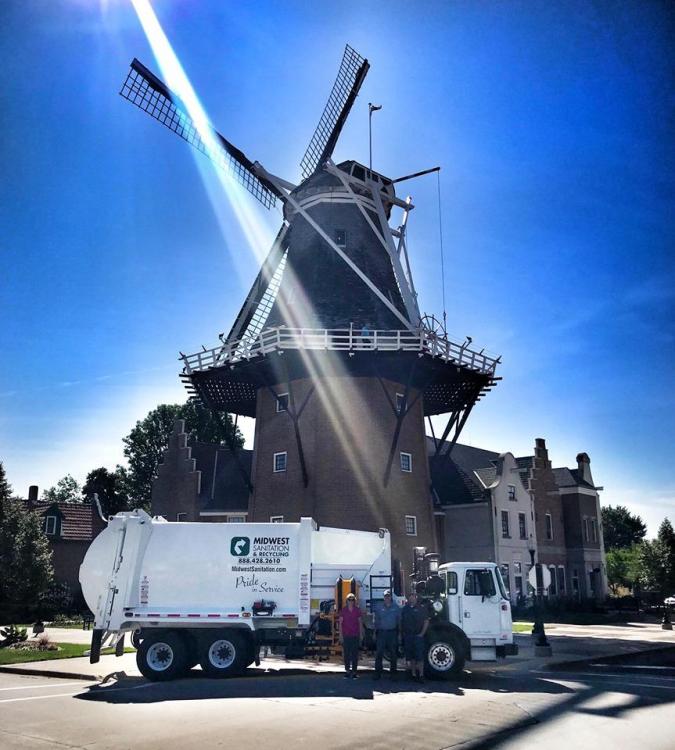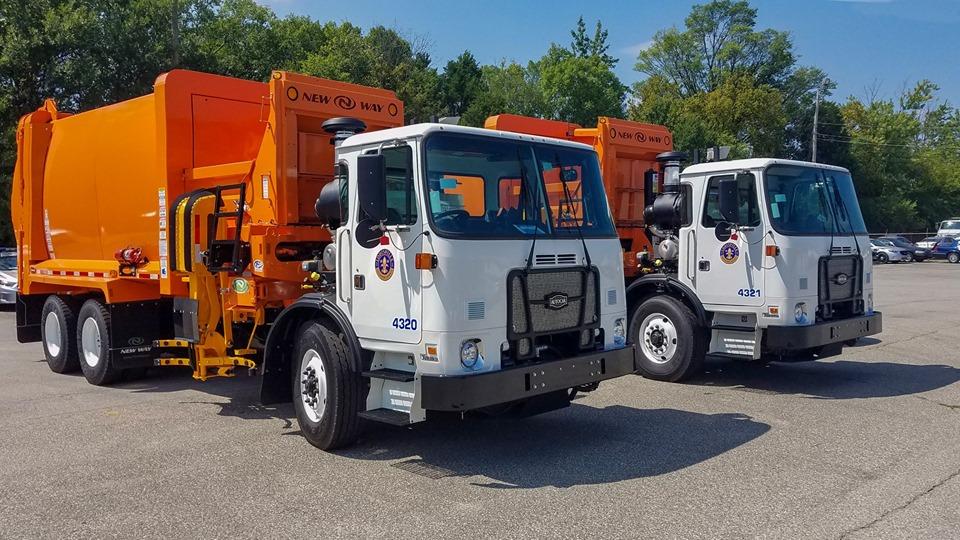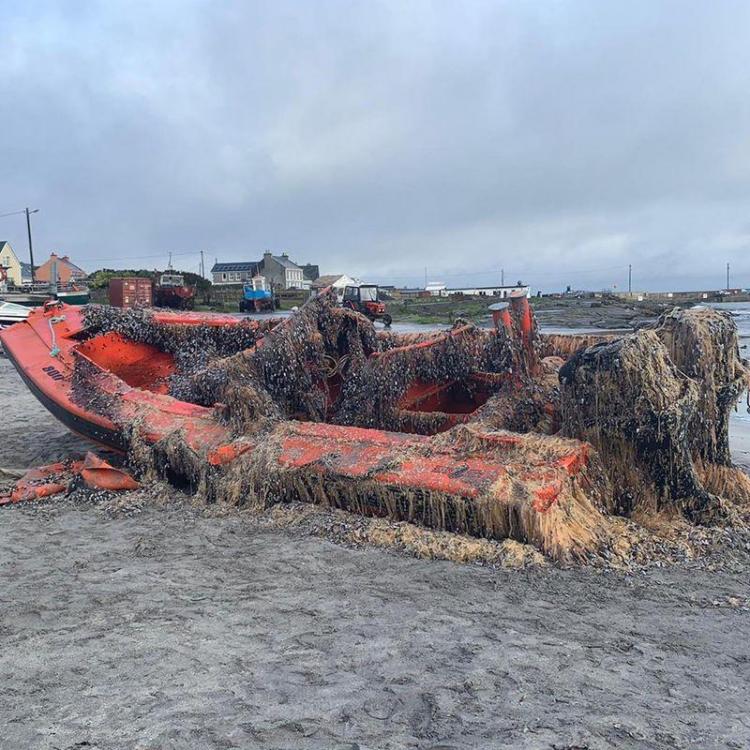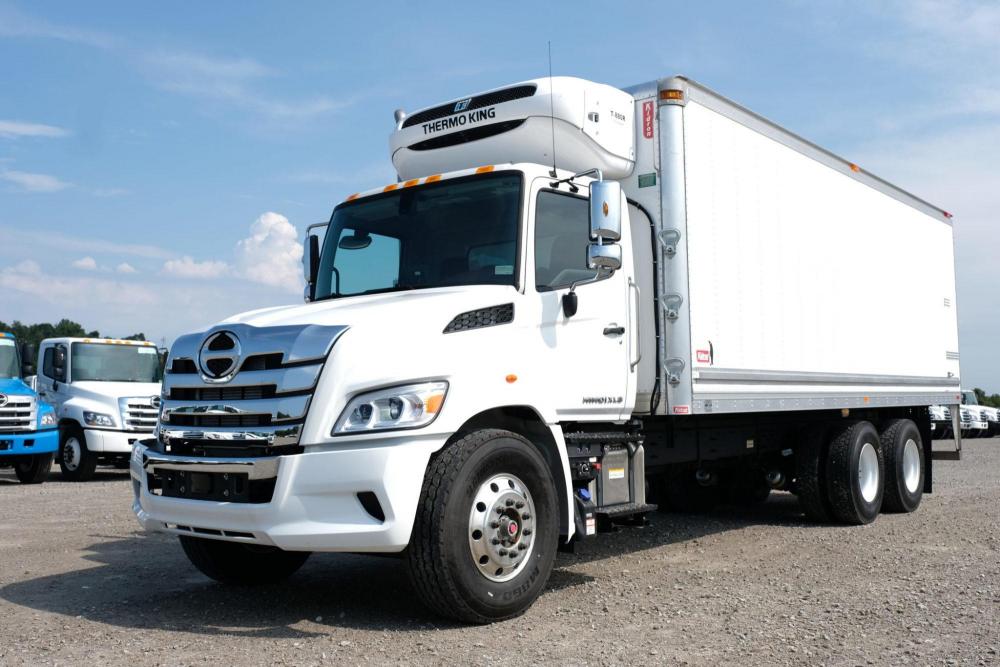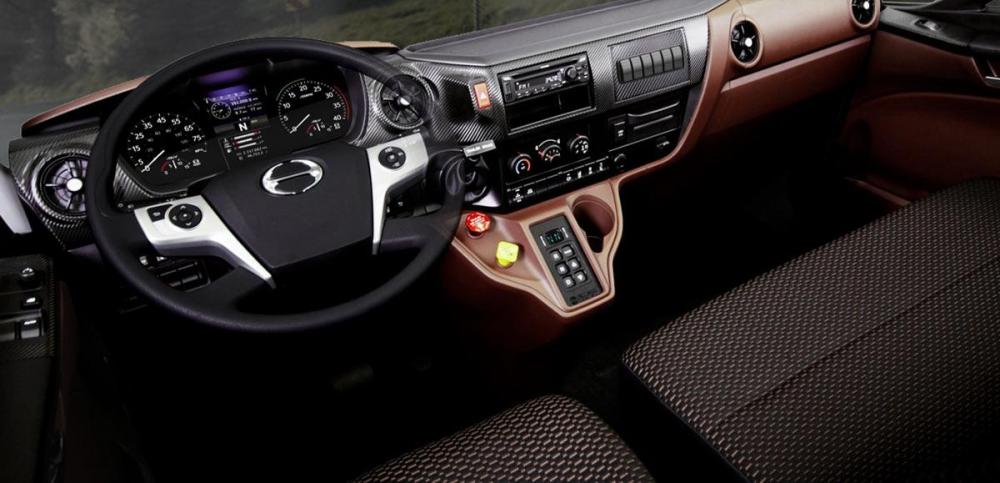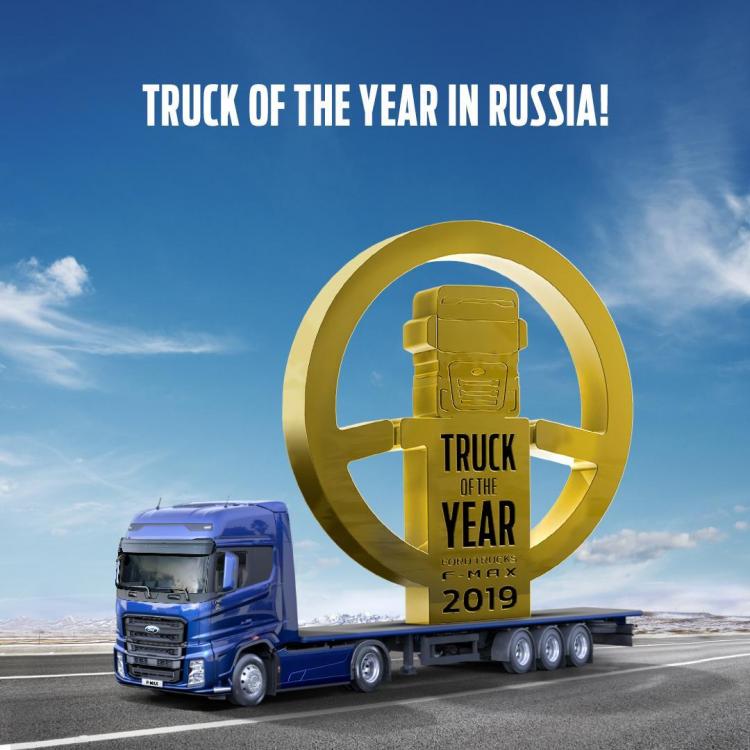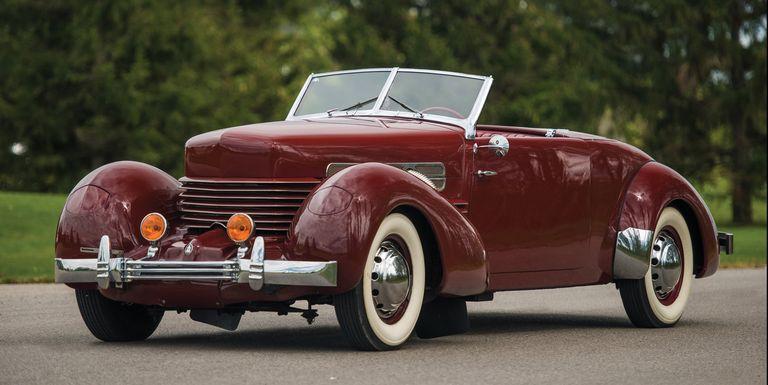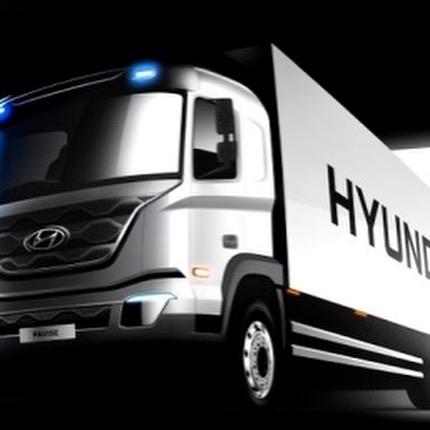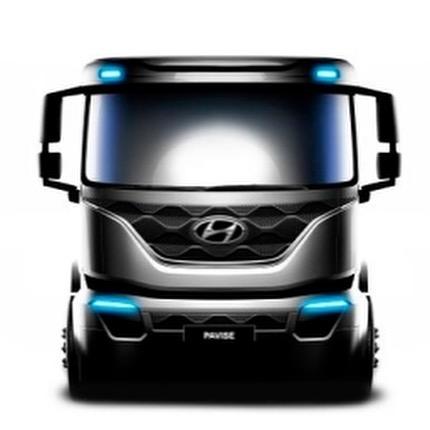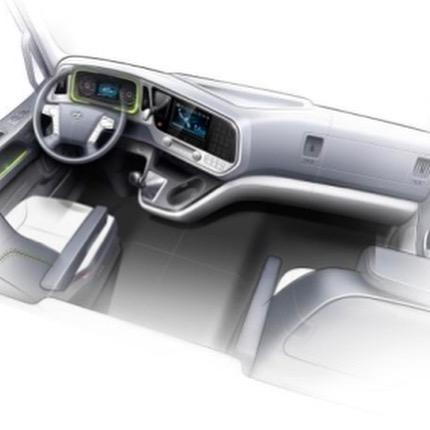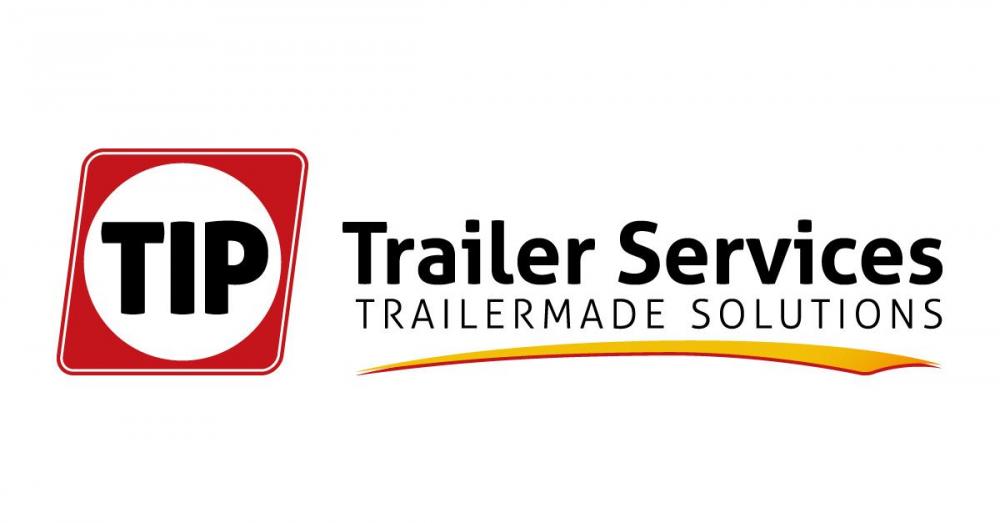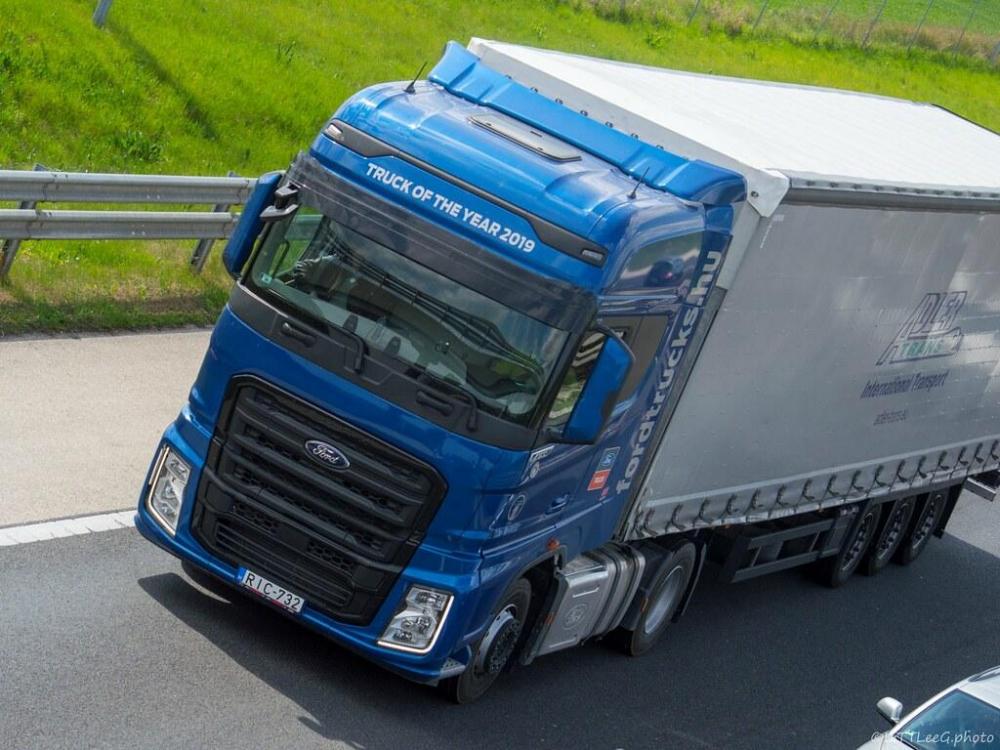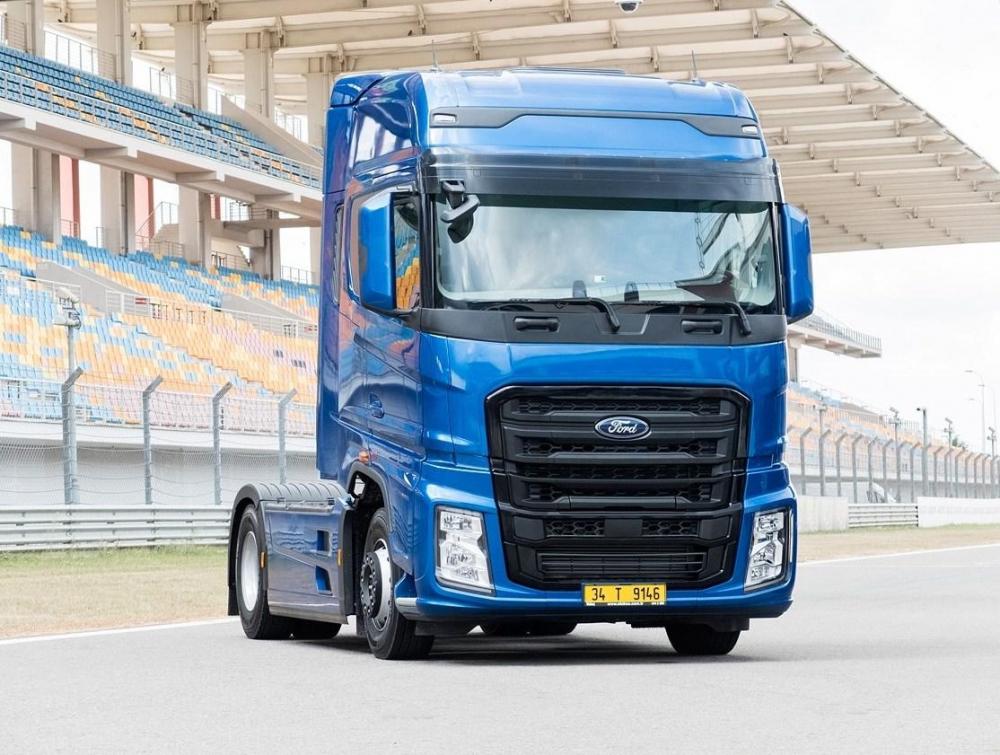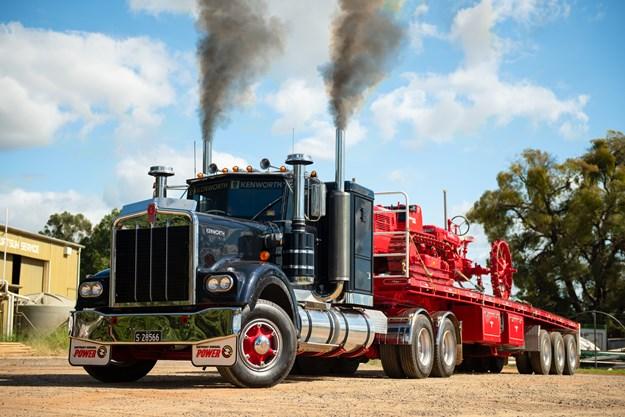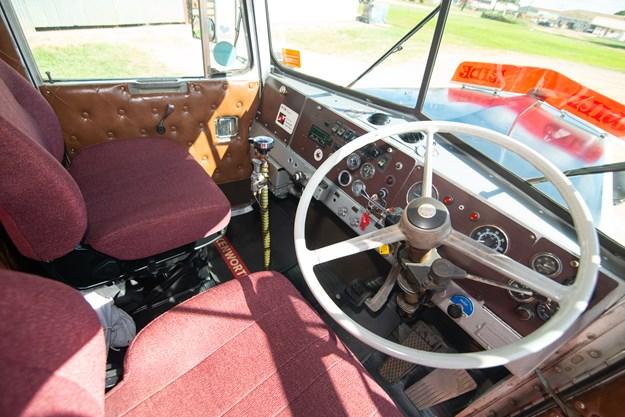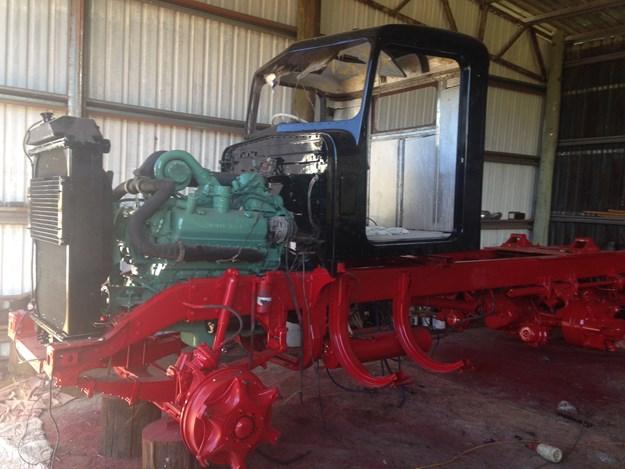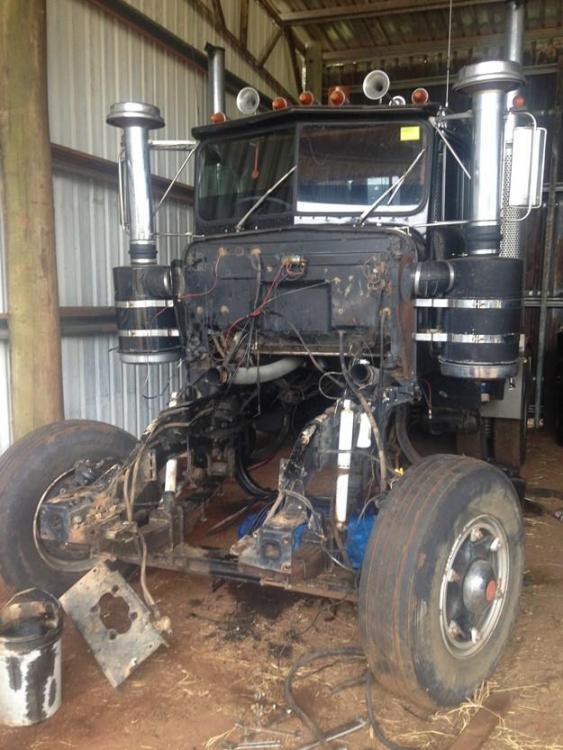
kscarbel2
Moderator-
Posts
17,891 -
Joined
-
Days Won
86
Content Type
Profiles
Forums
Gallery
Events
Blogs
BMT Wiki
Collections
Store
Everything posted by kscarbel2
-
Congratulations Midwest Sanitation #AlwaysUp https://www.facebook.com/…/pcb.235697806…/2356971231061320/… Always Up - Autocar Trucks .
-
These spiffy new Sidewinders, mounted on Autocar Trucks, are ready to serve the Louisville Metro Public Works Department. Keep an eye out for them if you're in the Louisville, Kentucky area. They're sure hard to miss! #AutocarTrucks #DrivingTheDifference Always Up - Autocar Trucks .
-
Scania Group Press Release / August 29, 2019 Valencia-based Delgo Transport specialises in refrigerated transports at both a national and international level. Today, just a year after acquiring their first liquefied natural gas truck, half of the company’s fleet of 110 trucks runs on LNG, and, so far, Managing Director Félix González likes what he sees. “When we found out Scania made gas trucks, 80 percent of the decision was made,” he says. “And the results we’ve had have been better than what we had on paper. Better consumption levels, and fewer emissions of course.” The trucks also appeal to customers looking for alternative fuel transports, helping to drive Delgo’s quick adoption of such a large LNG fleet. “When we did some analysis, we thought it was riskier to not do anything,” he says. Delgo’s LNG trucks are used mostly for national and distribution transport for several large supermarket chains in Spain. In addition to investing in a renewed LNG fleet, Delgo has also installed its own LNG filling station at its main facility in Valencia, a strategic decision that should, in the long run, save both time and money. The company is also taking advantage of a rapidly growing network of LNG filling stations around Spain. While the most obvious difference for drivers is the refuelling procedure, driver Salvador Sultan Blasco says the new LNG trucks haven’t changed his work much. “My first impressions are good ones. It feels a bit better because the engine is very smooth,” he explains. “You don’t hear a typical diesel engine noise, but driving it is the same.” Drivers have also benefitted from driver training specifically for the LNG trucks, which have had a measurable impact on fuel consumption. “The Barcelona truck fleet started using gas trucks last July,” explains Fleet Manager Rafa Gimeno Ros. “And after training, consumption was reduced by two kilograms per hundred kilometres.” (LNG consumption is typically measured in kilograms, which are roughly equivalent to a litre of diesel.) For Gonzaléz, LNG trucks are the common-sense alternative to diesel. “I don’t think it’s the final step towards zero emissions, but it’s a model that’s here to stay,” he says. .
-
Associated Press / September 5, 2019 Crew members of western Ireland’s Doolin Ferry Co. were headed to Inis Oirr, a small island in Galway Bay, on Monday afternoon when they spotted something bright orange floating in the water. “First I had a feeling of fear, (wondering) if there was people in difficulty 'cause we could only see about a meter of the bow sticking out of the water,” Tom Noel, one of the crew members, said Thursday. “Then once we got closer and could see the amount of growth on it, I knew it was a long time in the water and that it was only a danger to navigation." Upon investigating, Noel and the rest of the Doolin Express crew found the boat covered in goose barnacles — it had clearly been in the water for awhile — and along with a local fishing boat, towed the boat to the beach at Inis Oirr, where many islanders helped pull it ashore. A day later, Doolin Ferry Co., which is based near Ireland’s famed Cliffs of Moher, posted the account on Facebook. At that point they guessed the boat was a U.S. Coast Guard rescue boat, but were hoping for any details on what brought it so far. The post blew up online. “We couldn’t have predicted the interest from the public that there has been in this boat,” Liam O’Brien, the ferry company’s owner, later said in a news release. “There was a lot of growth on it, it had clearly been there for a long time. We already have a shipwreck on the island, so everyone’s saying this is the new one. This is definitely the most unusual thing we have discovered and it’s drawing in lots of tourists to the area.” News outlets across Ireland picked up the mystery. Thousands of people shared their theories on social media. Was it a drug-running boat masqueraded as law enforcement? Was it an American military vessel used to spy on the Irish? Within a day the answer came. A representative for Silver Ships Inc., an Alabama-based shipbuilding company, confirmed it had manufactured the boat in 2015 for the U.S. Navy, the ferry company’s Siobhan Nolan said in an email. It’s a High Speed Maneuverable Surface Target that can be used remotely and is used as target practice by the Navy. “We believe the boat originated in Norfolk, Virginia,” Doolin Ferry Co. said. “It’s likely that it was lost during a training exercise and it remained in the water drifting until it ended up in the water close to Inis Oirr. … How cool is that?!” That’s more than 3,400 miles of drifting. Turns out, it’s true. Timothy Boulay, a spokesman for the Naval Air Warfare Center Aircraft Division, said Thursday that the vessel was lost during a missile test and evaluation event about 75 miles off the coast of Norfolk last September. After realizing the target was lost, the Atlantic Target and Maritime Operations team searched for five hours but couldn’t find it and notified the Coast Guard of the potential navigation hazard. Is it shocking the boat made it across the Atlantic? Not very, Boulay said, because the test vessels are foam-filled so that they don’t sink. Navy folks hadn’t heard of the recent discovery until coming across a story on Facebook Wednesday. “Our people are not surprised it made it to Ireland." .
-
Ford's New 7.3L Engine & Standard PTO Lauren Fletcher, Heavy Duty Trucking (HDT) / September 5, 2019 Ford has released some of the vital performance numbers for its all-new 7.3L gas engine that it introduced earlier this year as the latest powertrain option for its 2020 Super Duty lineup. The big-block engine cranks out best-in-class gas V-8 output of 430 hp at 5,500 rpm and best-in-class torque of 475 lb.ft. at 4,000 rpm in Super Duty pickups, according to the company. A dyno-certified version of the 7.3L V-8, producing 350 hp at 3,900 rpm and 468 lb.-ft. of torque at 3,900 rpm, is standard on the F-450 chassis cab; the F-550; the new F-600, F-650, and F-750 Medium Duty trucks; and F-53 and F-59 stripped chassis models. Also new on the 2020 Super Duty Chassis Cab, a power take-off (PTO) provision will be included as standard with the third-generation 6.7L Power Stroke turbo diesel engine for auxiliary power needs on commercial vehicles. “Adding PTO as standard on Super Duty Chassis cab vehicles with the diesel engine protects both the customer and dealer as it is often an overlooked option,” said Kevin Koester, Ford Commercial Truck Brand Manager. “It’s a critical component to deliver power on the move and operate equipment while the engine is running.” The New 7.3L Engine The 7.3L V-8 features an overhead valve architecture that helps get heavier loads moving sooner due to power low in rev range, according to Ford. It also features a variable-displacement oil pump, extra-large main bearings, forged steel crankshaft, and piston cooling jets to help manage temperatures under heavy load. It will be available first in Super Duty F-250 and F-350 pickup models. It joins the 6.2L V-8 gas engine in Super Duty’s lineup and the upgraded third-generation 6.7L Power Stroke diesel V-8. The 7.3L engine is paired with the all-new Ford-designed and Ford-built 10-speed heavy-duty TorqShift automatic transmission on all models except F-650 and F-750, which retain the heavy-duty 6-speed. “The 7.3L is designed for maximum durability in the harshest environments given that our customers live and work in these conditions every day,” said Joel Beltramo, Ford manager for gas V-8 engines. “This engine has the largest displacement in its class and is designed to provide benefits in key areas like power, durability, ease of maintenance, and total operating costs.” Updated PTO Offerings Fleets that depend on work trucks often need to power additional equipment, either stationary or while moving. Ford’s Live-Drive PTO allows commercial customers to power industrial equipment and accessories, including generators, snowplows, and hydraulic units while the truck is in motion. Combined, the 6.7L Power Stroke and all-new TorqShift 10-speed heavy-duty automatic transmission with the PTO provision delivers best-in-class stationary torque of up to 300 lb.-ft. for commercial vehicle bodies that require direct-to-component or hydraulic body motor power, according to the company. “For a lot of our commercial and heavy-duty retail customers, PTO power is the only way they can get a job done,” Koester said. “More standard PTO torque gives upfitters and customers the knowledge and comfort that they’ve got a chassis capable of the heaviest workloads.” A PTO allows fleets to mount accessory equipment to the transmission for auxiliary power from the engine to increase application functionality when direct or hydraulic power is required, such as generators, cranes, wreckers, pumper trucks, and boom lifts. The PTO provision will remain optional on 2020 Super Duty Pickup models and 7.3L gas V-8 Chassis Cab models.
-
Hino Enters Heavy Duty Market with XL Series Truck
kscarbel2 replied to kscarbel2's topic in Trucking News
Test Drive: Hino's XL 8 Class 8 Straight Truck Jim Park, Heavy Duty Trucking (HDT) / September 9, 2019 We waited nearly a year and a half for a ride in one of Hino’s new XL Series trucks. This Class 8 straight truck, configured with a 24-foot reefer box, is pretty typical of the applications this truck will see when customers get their hands on them. After all that time, I have to say it was worth the wait. According to Glenn Ellis, Hino’s senior vice president for customer experience, Hino had been toying with the idea of getting into the heavy Class 7 and Baby 8 markets for 10 years, and finally got down to serious work on the project in 2015. Three years later, in March 2018, Hino launched the XL at the Work Truck Show in Indianapolis. We hadn’t heard much about the XL Series since then, but Hino offered us a test drive a day before the official grand opening of its new 1-million-square-foot manufacturing facility in Mineral Wells, West Virginia. “The truck will be offered in a 4x2 straight truck and tractor configuration as well as 6x2 straight truck and tractor,” Ellis said during its premiere at the Work Truck Show. “We are targeting the 33,000- to 60,000-pound gross vehicle weight and the 66,000-pound gross combination weight segments, which have historically been voids in our product lineup.” Ellis sees the XL in segments such as construction, utility, beverage, reefer box, roll-off, and towing and recovery. “The XL represents an opportunity for Hino to expand our presence into a much larger customer base than we have had in the past, especially in the food and retail delivery in urban environments.” All XL series trucks are powered by the A09 turbo-diesel engine. It’s new to North America, but more than 50,000 of them are already working in other markets around the world. It has been in production since 2007 so makes its North American debut with 15 billion real-life miles behind it. The 8.9L inline-6 engine produces 300-360 hp and 900-1,150 lb-ft of torque. The A09 features common-rail fuel injection, a variable geometry turbocharger and Jacobs engine brake. Hino claims a B10 life rating of 1 million miles. (B10 is the expected engine life in miles of operation before 10% of that model of engines in operation will require a major repair, overhaul or replacement.) In the cab The tall, squarish cab is a trademark of sorts with Hino’s conventional models, but the XL interior is a fresh design. It has an automotive style to it, and the driver command center is grouped with the priority instruments and controls front and center. The less-used bits are pushed off to the right but still well within reach. The speedometer and tachometer surround an LED driver display that offers a selection of menus, from current and historical fuel economy to various engine parameters. I found the display a bit dim, but it was extremely bright outside, so it might have just been a question of contrast. The controls for the display menus are on the left side of the steering wheel for easy manipulation with your thumb. The cruise control switches are on the right side of the steering wheel. The steering wheel has some fore-and-aft and up-and-down adjustment, but it's fairly limited. Sitting high up in the seat as I do, I found the top of the tach and speedo were obscured by the wheel. Not a big deal, really. And curiously, the primary and secondary air reservoir gauges are calibrated in 10-pound/square-inch increments, so when the tanks are at full pressure, the gauges read 12, rather than 120. On the sides of the dash A-panel are two large heat/air conditioning vent openings, which provided terrific cooling airflow around the driver. Just to the right of the A-panel is a card slot that serves no purpose here in North America, but I suspect is a requirement in Europe and other markets where they use driver smart-cards with electronic tachographs. The near-side of the B-panel holds the radio and directly beneath that, the HVAC controls. Further out to the right is a space that could be fitted with any of several devices; our test truck had the controls for the reefer unit in that spot. It’s a more convenient location for those controls than outside on the front of the cargo box. The test truck had a National air-ride driver’s seat with a right-hand arm rest. The passenger seat was a two-person bench seat. The cab upholstery is decent, and it did a good job of keeping engine and road noise out of the cab. I found it compared favorably to other city trucks I’ve driven recently, but it’s not as quiet as some of the newer on-highway trucks I've driven, which are now approaching passenger-car noise levels. The two features I liked the most were the abundance of glass and the amazing door arm-rest and grab bar for pulling the door closed. The windshield is massive at 2,385 square inches, and the side windows are cut low at the front for astonishing visibility close-in around the truck. It was really the first thing I noticed when I climbed in: I sat up nice and high in the seat and I could see everything around the truck – definitely something you want in a truck that's working in the close confines of an urban environment. The slope of the hood helped here, too. There was really nowhere for stray pedestrians to hide. The doors boast an 80-degree opening, making it very easy to climb into. The steps and grab bars on the A- and B-pillars are well-placed. The steps are nicely engineered, especially the top step – it’s more like a landing platform. It’s big and square and flat, which is huge safety feature for drivers who will be entering and exiting the cab dozens of times a day. Getting the hood open for the trip inspection is light work and the hood latches are big and easy to manipulate. Under the hood is the pretty tightly packed A09 engine. Fluid levels such as coolant and power steering fluid are easy to check, but the transmission fluid dipstick is a bit of a reach. The oil dipstick is tucked down low and nestled in amongst a bunch of pipes and hoses. It might be a bit hard to grab for a driver wearing big gloves, but it was easy enough to reach bare-handed. All these inspection points are on the left side of the engine compartment, while the windshield washer reservoir is on the right. (No big deal, since you have to walk around and inspect that side anyway.) A couple of other points worth mentioning are the three-piece front bumper and the jump-start posts, which are located under the driver’s door beside a lockable battery lockout switch. Bumpers obviously can take a beating in the city, so Hino is helping to minimize repair costs with the three-piece design. Driving the XL A few features of the XL are immediately obvious as you climb aboard and strap in. First, the trip up into the cab is probably one of the best I have encountered. The steps are evenly placed, and they are big and grippy. The door opens wide enough for even the largest driver, and there’s a lot of belly room behind the wheel – way more than I needed. I didn’t measure anything, but I had the impression the XL is one of the tallest cabs (and driver positions) around. The mirrors are well-placed and hardly compromise lateral visibility at all. They are mounted slightly forward, so you still have a clear view of traffic approaching from the right. The mirrors are door-mounted and jiggle a bit when you go over a good bump, but they do not vibrate at all when idling. The 6-speed Allison 3000 RDS transmission was wired with Fuelsense 2.0, and that makes for much more comfortable, lower-rpm shifts, with a smoother launch and a quieter ride up through the gears. Our test truck was equipped with a 24-foot box, tandem drive axles and a 14.6K front end, but it was surprisingly smooth and maneuverable for its size. The truck had a 50-degree wheel cut, making it possible to complete a right-hand turn from the right lane without crossing over into the next lane, except on some of the narrower streets on our route. Standard-width lanes posed no problems, right or left. The steering was firm, but not stiff, and just right on the highway. We crossed over a really narrow bridge driving through Parkersburg, West Virginia, one that makes drivers watch both mirrors to make sure there’s a little space on the right and the left. The confident steering and the generally well-engineered feel of the truck let me cross the bridge without once feeling unnerved by the tight lanes. I drove around Parkersburg for about an hour, negotiating the city streets, traffic lights, bridges and railroad tracks, and never felt the truck fighting back. We had about 10,000 pounds in the box, hardly a match for the A09, but it was enough to keep the drive wheels on the ground going over bumps. Even with that bit of weight, the beefy front suspension felt smooth and sturdy, not bone-jarring. And for a rubber-block drive axle suspension, the 40,000-pound Hendrickson Haulmaax was surprisingly unobtrusive. I covered about 10 miles on Interstate 77 and about the same distance on some winding West Virginia back roads between Parkersburg and Mineral Wells. I give the XL top marks for handling in both these environments, with the added bonus of getting up to speed in the interstate pretty quickly. The Dana rear axles had a drive ratio of 5.29:1, so we were running at 1,700 rpm or so at 60 mph. That's a little fast for optimum fuel efficiency, but a ratio like that gives it the gradeability and startability you need in the city. Hino trucks are often seen as pricier than some of the competitive models, but they come with an impressive list of standard features and warranty coverage that you pay extra for with other brands. For example, all conventional models, including the XL Series, come standard with 5-year/250,000-mile extended warranty coverage, including key components such as fuel injectors, the fuel injection supply pump, and the turbocharger. On top of that, Hino Class 6-8 trucks now come standard with a 5-year, unlimited-mileage transmission warranty on all Allison transmissions. Hino will build all the XL Series trucks at the new Mineral Wells plant. Production began earlier this year, and the company say it plans to build 2,500 XL7 and XL8 trucks in the plant before year’s end. Spec Sheet: 2020 Hino XL8 6x4 24-ft Kidron refrigerated body, Thermo King T-880R TRU Engine: Hino "A09" 8.9L 300 hp/1,150 lb. ft. Trans: Allison 3000 RDS 6-speed Driveline: Dana Spicer SPL 170 Front End Dana Spicer E-Series E-1462RW 14.6K 14.6 K tapered leaf springs ZF TRW TAS 85 power steering Bridgestone M870 315/80R22.5 Rear End Dana Spicer DSH40 40K axles; 5.29:1 ratio Hendrickson Haulmaax 40K Bridgestone M760 11R22.5 Standard equipment: Drum brakes, LED headlamps, cab air suspension, air-ride driver's seat, cruise control, air conditioning, Wabco On-Lane lane departure warning w. suspend switch, Wabco On-Guard collision mitigation, Hino Insight telematics (one year free), Hino Insight remote diagnostics and case management (five years free) Wheelbase: 261 in. Vehicle weight rating: 54,600 lb. . -
Love the AMX, Javelin and 304/4-spd Gremlins. i never liked the later Pacers with the raised hood. It looked awkward. Had General Motor’s Wankel engine been a success, the motor originally intended for the Pacer, I believe this car would have been far more successful.
-
Ford Trucks International Press Release / September 3, 2019 Our award-winning Ford Trucks F-MAX has won The Truck of the Year Award in Russia. #SharingTheLoad #FordTrucks #IToY #FMAX #Russia #Comtrans .
-
Nikola to get $250 million, expertise via Partnership with Iveco parent CNH David Cullen, Heavy Duty Trucking (HDT) / September 3, 2019 Hydrogen-electric truck builder Nikola Corp. has entered into a strategic and exclusive partnership with a major global truck OEM "to accelerate industry transformation towards [the] emission neutrality of Class 8/heavy-duty trucks in North America and Europe through the adoption of fuel-cell technology.” In plainer English, the deal means Nikola will get an infusion of funds and real-world expertise to bring to market its vision of a zero-emission future for trucking here and abroad. The agreement inked between Phoenix-based Nikola and CNH Industrial N.V includes a $250 million investment in Nikola. CNHI, based in the Netherlands, is the parent of Italy-based truck maker Iveco and of agricultural and construction equipment makers Case and New Holland. In a Sept. 3 news release, the two companies state that Nikola’s zero-emission heavy-duty trucks, powered by proprietary hydrogen fuel cell and battery technology, will be the first such vehicles to go into production. Further, they contend that Nikola’s “disruptive business model foresees an industry-first ‘all-in’ lease rate, which includes vehicle, service, maintenance and fuel costs, providing long-term total cost of ownership certainty at or below diesel costs.” Iveco and FPT Industrial, the commercial vehicle and powertrain operations of CNHI, respectively, will provide engineering and manufacturing expertise to help put into production Nikola’s fuel-cell and battery electric trucks: The Nikola One, a North American Class 8 sleeper truck; the Nikola Two, a North American Class 8 daycab; and the Nikola Tre, a European cabover heavy-duty truck. Nikola will contribute technologies for a European joint venture with CNHI that will include fuel-cell expertise, e-axles, inverters, independent suspension, on-board hydrogen fuel storage, over-the-air software update functionality, infotainment, vehicle controls, vehicle-to-station communication protocols, power electronics, and access to a hydrogen fueling network. Noted in the release as “strategic near-term project milestones” are putting into production the fuel-cell powered version of the Class 8 Nikola Two (there is also an all-electric version) for the North American market, as well as the integration of Iveco’s S-Way truck technology into the battery-electric powered Nikola Tre model, which is designed for both the North American and European markets. The companies said that, in the long-term, a European joint-venture will cover both battery electric vehicles and fuel-cell electric vehicles to be launched by the end of 2022. In addition, Nikola plans to leverage Iveco’s European sales, service and warranty channels to boost its access to the European truck market. Under the agreement, CNH Industrial will take a $250 million “strategic stake” in Nikola as the lead Series D investor. Pre-money valuation was set at $3 billion, with Nikola anticipating raising over $1 billion in the D round, granting approximately 25% ownership to new investors and business partners, including CNHI. The partners stated that, “Fuel-cell technology is the logical next step to liquefied natural gas-powered engines, as it builds on existing refueling networks, enabling local on-site production of hydrogen." The companies touted FPT industrial's alternative-fuels credentials, noting it has produced over 40,000 natural gas-powered engines to date. "Iveco is the absolute European leader in natural-gas vehicles, with some 28,000 of its trucks and buses powered by FPT Industrial engines.” The release also pointed out that just as FPT Industrial and Iveco have worked to develop and expand Europe’s natural-gas refueling network, “Nikola is actively working with partners to develop the required hydrogen refueling infrastructure in North America and Europe.” “The time has come to finally provide a zero-emission solution to the heavy-duty market,” said Nikola CEO Trevor Milton. “While other OEMs believe zero-emission solutions cannot happen in the timeframe regulators have mandated, Nikola, FPT Industrial and Iveco are proving that these timelines are not unreasonable. “Nikola has the technology but needs a partner with a European network to achieve it in a timely manner,” he continued. “With CNH Industrial’s investment and partnership, we can now bring zero-emission trucks to Europe… By bringing CNH Industrial on board, we now have access to manufacturing know-how, purchasing power, validated truck parts, plant engineering and much more. Few will doubt our ability to commercialize a truck now.”
-
GM selected by UAW as target automaker Michael Martinez, Automotive News / September 3, 2019 DETROIT -- The UAW on Monday selected General Motors as its initial target for a new contract as labor pacts with the Detroit 3 automakers are set to expire Sept. 14. GM's selection as the target means contracts with Ford Motor Co. and Fiat Chrysler Automobiles would likely be patterned around what the union can negotiate with Detroit's largest automaker. The two sides have significant challenges to overcome involving plant investment, labor costs and use of temporary workers. One of the largest sticking points will involve GM’s decision last November to “unallocated" five of its North American assembly plants at a time the union is trying to protect jobs and win additional investment. “They’re biting off the hard one first,” said Kristin Dziczek, vice president of industry, labor and economics at the Center for Automotive Research in Ann Arbor, Mich. “GM is difficult because of the unallocated plants, but it goes beyond that. There’s a bunch of other plants that aren’t running at full capacity.” GM has been the target in three of the past four regular rounds of contract talks (2007, 2011, 2019). FCA went first in 2015, and workers voted down the first deal presented to them. "Mary Barra said from the outset of these talks that we will stand up as we tackle a changing industry," UAW President Gary Jones said in a statement. "We are ready to stand strong for our future." The two sides have significant challenges to overcome. GM has the highest labor cost, at $63 per worker, and the highest gap between with the transplant automakers among the Detroit 3. GM also has about 4,650 temporary workers, representing 10 percent of the 46,000 people in its U.S. hourly work force, though its annual average runs closer to 7 percent. The UAW is attempting to lower the number of temps used by the Detroit 3 and offer them a path to full-time work. But the biggest challenge of all involves the automaker’s five “unallocated” plants. GM in November said it would not allocate products to Lordstown Assembly in Ohio, Oshawa Assembly in Ontario, Canada, and Detroit-Hamtramck Assembly in Michigan. Powertrain plants in Maryland and Michigan also have not been given new products. The move put the fates of roughly 6,700 hourly and salaried factory employees -- 3,800 in the U.S. and 2,900 in Canada -- in jeopardy. GM and Canada's Unifor union in May agreed to allow GM to convert Oshawa into an aftermarket operation, salvaging 300 jobs. And the automaker is in discussions with electric vehicle producer Workhorse Inc. to potentially sell the Lordstown plant. "We will leave no stone unturned to protect our brothers and sisters at the locations put on the block,” Jones told GM officials at the ceremonial handshake to kick off negotiations in July. “We call on GM to keep these plants open and allocate more products on American soil. It can be done." Art Wheaton, a labor expert at Cornell University, said the union “seems to have some bones to pick with” GM because of the plant idlings. “GM was one of the ones that has the higher potential of a strike because of … games playing or working with semantics,” he said. Beyond the unallocated plants, Dziczek said the union has some opportunities to win back product and investment. GM is running at about 72 percent capacity utilization at its North American plants as of 2018, according to LMC Automotive. Meanwhile, Ford is running at about 81 percent and FCA is at 92 percent, according to LMC. Strike votes The union on Monday also released results of its strike authorization vote. Union workers at GM voted overwhelmingly at 96.4 percent, the highest of the Detroit 3, to approve the procedural move, which allows the union to strike if negotiations fall apart. Dziczek said choosing GM first doesn’t necessarily mean a higher chance of a strike, although this round of talks is likely to be the most contentious in years. The discussions could also be complicated by an ongoing corruption probe, which has recently expanded to involve officials formerly involved with the UAW-GM department. Federal prosecutors last month accused Michael Grimes, a former UAW official, of accepting bribes and kickbacks in the form of cash, checks and other valuable items worth hundreds of thousands of dollars. He is the ninth person charged in the ongoing scandal, but the first affiliated with the UAW-GM department. The Detroit News reported Joe Ashton, a former UAW vice president who sat on GM’s board of directors until resigning two years ago, was implicated in the investigation. “We look forward to having constructive discussions with the UAW on reaching an agreement that builds a strong future for our employees and our business,” GM said in a statement.
-
Car & Driver / August 31, 2019 Could the middle name in the Auburn-Cord-Duesenberg trio be about to make a comeback? Will the unlikely rebirth of the classic Cord automotive brand begin today? The name is up for auction at Auburn, Indiana, this weekend. The middle name of the legendary Auburn-Cord-Duesenberg trio did not emerge from the Great Depression unscathed, and its trademark was last sold in 2014 without sparking a renaissance. But think of the possibilities for retro Cord-branded clothing, toys, and model cars. Some people go to car auctions to buy cars. Others go to buy car companies. Classic-car fans from both categories are converging on Auburn, Indiana, this weekend for the 12th annual Auburn Auction. Alongside gorgeous options like a 1951 Studebaker Commander convertible or a 1948 Tucker Model 48 sedan (pictured below) that are up for sale, there's a "ran when parked" sort of entry. Instead of an actual vehicle, Lot 44 is for the Cord trademark. The auction lot includes the whole package, which means the trademark itself as well as the licensing and manufacturing rights to build new Cord automobiles. The last time the Cord trademark was sold was in 2014, when what was essentially the same lot as what will be available this weekend was sold for $242,000. The new lot has some updated paperwork, according to Worldwide Auctioneers spokesperson Jo Snyder, who also told Car and Driver that there has been "significant interest" in this auction. In the 1920s and 1930s, Cord was a popular luxury American automotive brand that made a mark with its 810 and 812 models (like the 1937 Cord 812 Sportsman convertible coupe at top). The brand did not survive the Great Depression and was sold to the Aviation Corporation, which attempted a revival in the 1940s. Another small-scale revival took place in the 1960s thanks to Glenn Pray, an auto mechanics high-school teacher, who bought the rights to what had become the Auburn-Cord-Duesenberg Company. Pray sold off the Auburn trademark in 2005 for $500,000, and his family then sold the Cord trademark in 2014. Now that it's available again to any qualified, registered bidders, the Cord trademark could be used by a new buyer to license Cord parts, make Cord-branded clothing and model toys or, perhaps, start up a new vehicle like with the classic name. "This is a rare and substantial opportunity to reinvent an iconic marque and all that is associated with it," said John Kruse, Worldwide Auctioneers principal. "Our hope is that a brave new future for Cord will begin again here." There's some precedent for classic brands to find a new home in today's global automotive industry. The Borgward brand, for example, quietly went away in Germany in the 1960s, but was revived after it was purchased by the Chinese company Beiqi Foton Motor in 2015. If buying the Cord trademark is a bit rich for your blood but you're still a fan of the look, the "highly preserved" 1937 Cord 812 Sportsman convertible coupe shown at top will also cross the auction block in Auburn this weekend. It's nice to have options. .
-
Ford Recalling F-150 and Other Models for Potentially Dangerous Seat Defect Car & Driver / September 3, 2019 Nearly half a million vehicles are involved, including new and recent F-150, Super Duty, Explorer, and Expedition models. Ford is recalling 483,325 U.S. vehicles, including F-150 and Super Duty pickups plus Explorer, Expedition, and Lincoln Aviator models from the 2018 through 2020 model years, over a problem with their seatbacks. The issue is a missing pawl in the seatback, which keeps the seat from reclining. In case of a crash, the seatbacks may not adequately restrain an occupant, Ford said. Dealers will replace the seat structure at no charge in the event the problem is found. This past weekend was not exactly a holiday for Ford’s safety team but was definitely a long weekend as they issued another recall in the month of August. The first recall we covered this month was because of missing plastic and no warning lights on some 2020 Lincoln Aviators and 2020 Ford Explorers. This new recall covers a far wider spread both in terms of vehicles and models affected and is for vehicles with a lack of seat restraint in the event of a crash. Certain 2018 through 2020 Ford F-150, 2019 and 2020 Ford F-series Super Duty, 2018 and 2019 Ford Explorer, and 2019 and 2020 Ford Expedition vehicles with a manual driver's-side and/or front passenger's-side seatback recliner mechanism, and certain 2020 Ford Explorer and 2020 Lincoln Aviator vehicles with rear outboard seats with manual seatback recliner mechanisms, are affected by this recall. These vehicles could be missing its third pawl (a bar in the seatback that prevents movement) required for seatback strength. Ford states that "a seatback with an improperly assembled recliner mechanism may not adequately restrain an occupant in a crash, increasing the risk of injury." A pawl is a bar that is a type of latch mechanism. It engages with the gear in the seatback to prevent movement or dictate the direction of movement of the seatback. It's what allows the seatback to move back and forth when the lever on the side of the seat bottom is pulled up. In the event of a crash, these pawls are supposed to hold the seatback in place; in the case of a frontal or rear collision, without the pawl engaged, the seat could unexpectedly recline or raise depending on the direction of impact. If this happens, the passengers are not restrained in their seats properly, and the seatbelts (and airbags if deployed) would not perform in the way they were intended to, which could then cause unnecessary injury to the passengers in the vehicle. This recall affects 483,325 vehicles in the United States. Dealers will be replacing the seat structure at no charge to customers in the event that the issue is found to exist in their vehicle. Ford reports that there are no accidents or injuries associated with the recall. Owners can learn whether their vehicle is involved in by visiting the recall page of Ford's owner website.
-
Brazilian automaker CAOA signs preliminary agreement to buy Ford Cargo truck plant Reuters / September 3, 2019 SAO PAULO -- Brazilian automaker CAOA reached an initial agreement to buy Ford Motor Co.'s plant in Sao Bernardo do Campo, the companies said on Tuesday, but CAOA could slash 1,300 jobs, according to the union representing the plant's workers. Ford announced in February that it would shut down the plant, its oldest in Brazil, which employs some 3,000 workers, as part of a global restructuring. CAOA and Ford have been negotiating the purchase since late February, Reuters reported at the time, when Sao Paulo state Governor Joao Doria rushed to find a buyer for the plant in a push to keep jobs in the city. Wagner Santana, president of the union that represents Ford's workers, told reporters that in conversations with CAOA, the Brazilian automaker said it would initially retain only some 800 workers and that 1,300 would be let go, with the remainder being kept by Ford. Doria has defended Sao Paulo as a manufacturing hub at a time when the auto industry turned to other Brazilian states that were offering aggressive tax incentives. He has introduced a tax incentive of his own. At the news conference, Doria said a decision on how many jobs will be kept can only be made once Ford and CAOA close the sale, which is set to go through a 45-day due diligence process. "Preserve all jobs, that's the fundamental condition for a contribution from the state," Doria said, in reference to potential tax benefits. Santana said CAOA plans to pay those it hires up to 80 percent of their current Ford salaries, noting that is still much more than salaries paid in other states. A CAOA spokesperson declined to comment. "The objective is to make the factory profitable and productive, so it generates employment and riches," said Carlos Alberto Oliveira Andrade, CAOA's president and founder, whose initials make up the company name. Brazil's large domestic market and protectionist economy has long attracted the world's biggest automakers to set up shop here, and CAOA is the rare domestically owned automaker. It has struck deals to make cars for Korea's Hyundai and co-owns China's Chery operation in Brazil, whose cars are branded as CAOA Chery. Ford opened the plant in 1967 and it is the company's oldest in the country. It was primarily used to make heavy trucks as well as the compact Ford Fiesta. Ford is undergoing a global restructuring and has said it would focus on a newer plant in the northeastern state of Bahia. Earlier this year Ford said it reached an agreement with the plant's union that would allow for workers to transition to a potential buyer, if a deal closes. The deal also included an exit package for workers.
-
Ted, I like the Volvo FH. If I was operating in Europe, it would do a reasonable job. Now that said, the FH is no Scania. But, you can't blame Volvo for their never-ending (however futile0 attempts at catching up with the leader in heavy truck development. Volvo even lured away Scania's president, a below the belt act, but it's had no effect. Volvo should pay Scania royalties though......Volvo shouldn't be allowed to follow Scania's footsteps year-after-year for free.
-
Hyundai entrusted Anderson with U.S. management........and that was the cause of the brand's failure. The truck itself was fine.
-
The failure of Bering was due to Bill Anderson. I like Bill, and respected his UAZ imports. However, he had zero experience for the Hyundai light/medium truck project. Offering Cummins power for the North American market was fine....I was good with that. But I would have introduced the trucks under the Hyundai brand. Fast forward to today, Hyundai is scaring the socks off of Japan Inc. with its automobiles, and the Xcient heavy truck is world class. I know the product inside-out, and its design team. This new medium truck will be superb.
-
-
Transport Engineer / August 30, 2019 Ford Trucks has appointed TIP Trailer Services to provide warranty and other services as part of the truck maker’s aftersales network in Western Europe. The manufacturer’s new F-Max tractor premiered at the IAA event in Hanover last year and won international truck of the year. This led Ford to increase its targets and, in turn, the number of service locations in Europe. Ford Trucks says it aims to have dealers in 51 countries by next year. Serhan Turfan, vice president for Ford Trucks, says: “The worldwide appreciation and acclaim for the F-Max, which we developed from scratch, has been an important driving force that has increased our international growth target. “In parallel with our growth target in Western European markets, the cooperation with TIP Trailer Services will contribute significantly to our goal of continuous customer support. We believe that this cooperation will bring very fruitful results for both parties.” .
-
Commercial Motor / August 14, 2019 .
-
Owner-Driver / August 29, 2019 ‘The truck that Facebook built’. ‘A mechanic’s hobby’. ‘Far from original’. All these could have been appropriate titles for this story, as all of them sum up exactly what Kirk Raabe’s 1972 W925 is all about. This beautiful black beast of a truck is built with bargains from Facebook. It is the after-hours work of a busy mechanic and it is definitely not in original condition. But summing up why Kirk Raabe actually has this stunning black rig is best left to another Kenworth W-model tragic, Andrew Rackemann: "He just wanted to be in the cool kids club!" While I’m sure most of you would much rather just look at the photos of this cool classic ride than hear me rattle, here’s the story as briefly as I can tell it. This one-of-a-kind 1972 W925 is owned by Kirk Raabe from Kingaroy. Kirk is actually a diesel fitter by trade and spends his days fixing and repairing trucks. He does have a bit of truck driving under his belt, but you wouldn’t class him as a life-long truckie. That shows just how much of an addiction the classic old Kenworths can be. Kirk spent a fair amount of time helping his good friend Andrew Rackemann work on his W-model and it seemed that the Kenworth virus latched onto Kirk in the process. As such, Kirk decided the gap in his garage could do with filling and he went fishing for his own truck project. In 2016, after a fair bit of work, Kirk hooked this 1972 W925 down in Burren Junction, New South Wales. The truck, though far from pristine, was still earning a crust as a farm truck towing a single around for a local cockie. Apparently, Ipswich Earthmoving bought the truck when it came off the line back in 1972, the same year we lost Olegas Truchanas (come on guys, he was a nature photographer, remember); and the same year M.A.S.H first hit our TV screens. It rolled off the production line as a short chassis day cab and was spotted pulling a float throughout North Queensland and even the Northern Territory. Kirk is very hazy on how long it was there and the path it bounced along to end up at Burren Junction but along the way the 250hp (186kW) Cummins motor was replaced with a Detroit 8V71. The big Detroit was obviously worked pretty hard and by the time Kirk and Andrew were tasked with driving it back up from NSW to Kingaroy the old girl was blowing more smoke than a Woodstock reunion. I think it was little surprising to both men that the engine made it all the way home, which is more than can be said of one of the wheel seals. That was a fix-up job at Dalby. Once the old workhorse was back in Kirk’s garage the tear-down began. The whole thing was pulled apart and stripped back. Although the truck was already black, as were the tanks and chassis, Kirk had the team from D&S Paint and Panel redo the whole thing. His original entire Matt Black idea was soon shot down and the choice was made to go for the red chassis and gloss black look instead. While all the rear end and even the 15-speed overdrive gearbox still had plenty to offer, the same couldn’t be said for the well-worked 8V71. It would have been more use as a fantastically oversized paper weight after its hard life and so Kirk went looking for a replacement. Like any good mechanic he found a replacement on Facebook. A few phone calls, a couple of handshake deals and there was a well-used 8V71T, out of an old K123, sitting on Kirk’s workshop floor. For those with slightly more mechanical knowledge that me, which is damn near everyone, you are probably asking: "A cab-over motor into a W925. What? How?" Well those are all very good questions and the refit involved a lot of ingenuity on Kirk’s part. "We modified a lot to get it to fit," he admits. "Everything was mounted at the back on a cab-over because they had plenty of room." The painful task of moving turbo, alternator, compressor and many other parts kept Kirk busy for a fair while. Like any good truck restoration story, Kirk was that annoying owner who waited for the whole thing to be reassembled before he changed his plans and decided to stretch it and add a sleeper box to it. God forbid he work out that major change before he’d re-assembled it; which for the record was done in true bush mechanic style. Kirk had attached two pieces of two-inch water pipe under the cab and used an old farm tractor with hay spears to put the freshly painted cab back on. That task was a lot easier for the tractor than when they put the motor and box back in; on that occasion the poor old tractor flattened the front tyres and Kirk had to wind the relief valve right up just to get the job done. Nothing is easy though and with the cab and motor back in the chassis rails Kirk informed everyone that he’d been surfing Facebook again and found a 36’ Coonabarabran sleeper box. The cab came back off and in the shed, on old carpet and iron sheets (safety first, can’t have the carpet catching fire). Kirk and his team cut the rails and extended the chassis by 1.25 metres. There is plenty of speculation as to Kirk’s motivation for this extension. I’m a firm believer that it was motivated by his desire to have a bigger truck than his good mate Andrew. Andrew will jokingly inform anyone who listens that it had something to do with giving Kirk space for his alleged unnatural relationship with goats. Andrew’s wife pipes in to say it’s just so he has somewhere to hide away. This seems most likely as the refurb of the sleeper included fitting a TV, DVD player and a Veisa picked up from a yard sale. I’ll leave the motivation behind it up to you guys to interpret. The motivation behind Kirk’s next Facebook shopping expedition is a lot easier to nail on the head. "I just wanted it because it’s noisy, no practical reason, just for the noise," was Kirk’s response when I asked why he fitted an air start system to his Kenny. Apparently, they were an option on Kenworth, he tells me, it’s just no-one really wanted them. Kirk however did, and yes, I’ll admit I did launch myself a little vertically when Kirk started it up as I was having a close look around it. Did I mention he also removed the muffler off the air-start system, just for a little extra noise! Was the job done you may ask? Is any rebuild ever finished? It’s hard to say. Kirk’s 1972 W925 is definitely ticking all his boxes though. It’s got the old-school cool looks, it’s got the neighbourhood disturbing noise, it’s got the rumbling, smoke blowing classic two-stroke engine, and he’s added in the modern luxuries of TV, DVD, sleeper air and power steering. Well done to Kirk and his support team who have done a great job of breathing life back into another one of Australia’s most iconic truck models. She definitely is a ‘Black Beauty’. .
-
- 1
-

-
.
BigMackTrucks.com
BigMackTrucks.com is a support forum for antique, classic and modern Mack Trucks! The forum is owned and maintained by Watt's Truck Center, Inc. an independent, full service Mack dealer. The forums are not affiliated with Mack Trucks, Inc.
Our Vendors and Advertisers
Thank you for your support!


